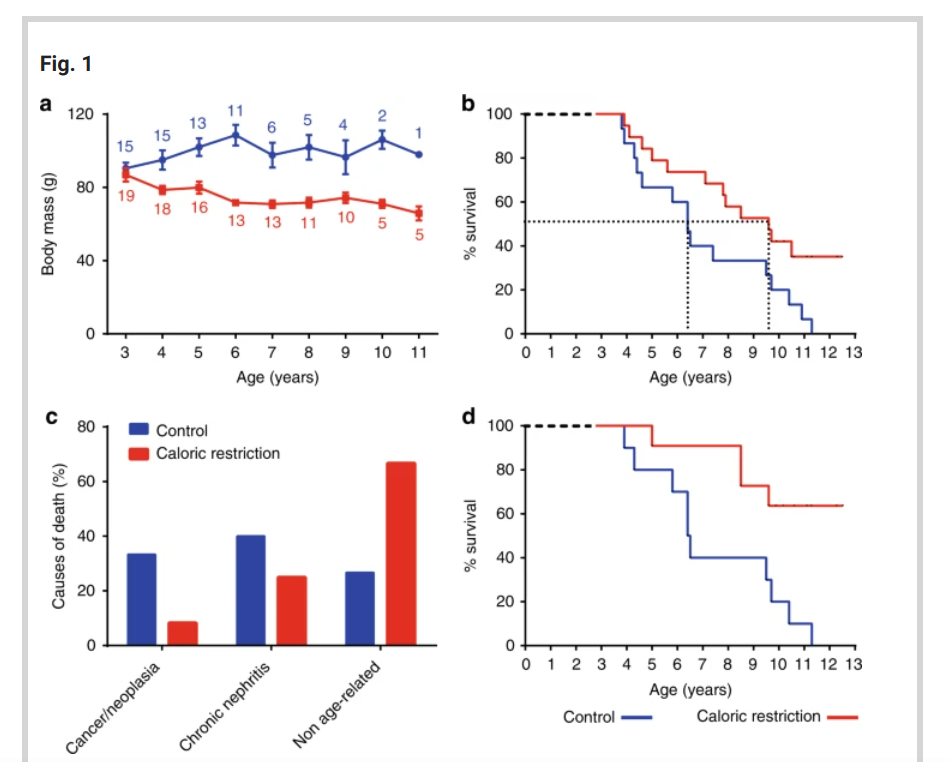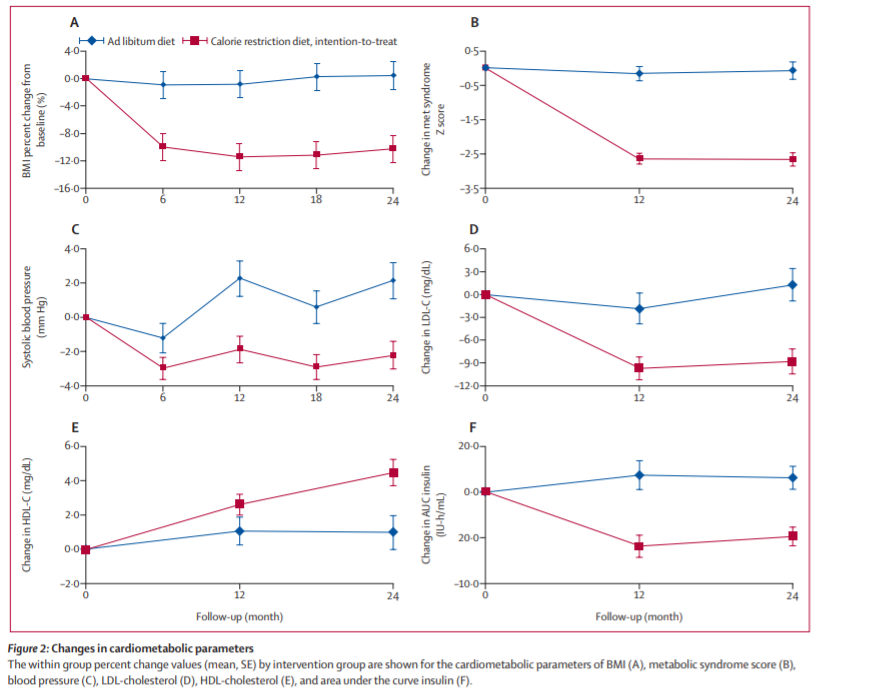By Dr. Sean M. Wells, DPT, PT, OCS, ATC/L, CSCS, NSCA-CPT, CNPT, Cert-DN
Diet crazes come and go in the hopes to correct health issues and for weight loss. Many diets are merely fads, not backed by evidence, and/or offer only short-term solutions. One dietary pattern that stands out from the pack is calorie restriction (CR), especially in regards to data on longevity. I have 2 peer-review publications in the area of CR and intermittent fasting, so I can share both the data and experiences of this diet. Let's take a quick look at calorie restriction and what physical therapists (PTs) need to know!
Calorie restriction is a dietary regimen where a person consumes typically 25-40% less calories than usual. In order to accomplish this calorie deficit a person must know their total daily caloric needs over several days. Calculating 25-40% of this total calorie needs a client can then reduce their calorie content of each meal in order to hit their calorie deficit. Usually there is not a time restricted component, as seen with the newly popularized time-restricted feeding (TRF). The big focus is eating less throughout the entire day.
To most Doctors of Physical Therapy (DPTs) it may seem obvious that eating less will promote a negative calorie balance and reduce body mass, but other physiological effects do occur under CR. The biggest side effect, as seen by countless animal studies, is lifespan expansion. Most data show that in as little as 30% CR many animal organisms, from rats, primates, to grasshoppers, will live extend life by anywhere from 25 to 50%! In fact, of all the diet fads and ridiculous supplements, CR has been consistency one of the only mechanisms researchers have found to extend life. Unfortunately, designing a trial for humans is not in the works, so transferring this lifespan extension data to humans is impossible at this time. Regardless, animal trials have shown lifespan extension as well as significant reductions in chronic diseases and body mass index, two factors that greatly affect mortality and morbidity. Take a look at the data from this recent Pifferi, F., Terrien, J., Marchal, J. et al. article focused on primates:

It clearly shows the positive effects of CR on primates both from a lifespan as well as a lifestyle perspective (e.g. quality of life, chronic disease development, etc). Interestingly in this study, the researchers noted in the primates on CR a reduction in grey matter (white matter was intact). Fortunately those CR primates did not see any appreciable deficits in cognition in memory, so perhaps this grey matter loss is insignificant for them. The monkeys were scheduled to eat 30% less calories but actually obtained only 24% fewer calories over the study. While a primate study is not a human trial it does show promise for us as well opens our eyes to possible mechanisms.
Data do exist on positive short-term effects of calorie restriction and some of the possible mechanisms in humans. Probably the most robust recent human examination of CR in humans was the CALERIETM clinical trial. CALERIETM stands for the Comprehensive Assessment of Long term Effects of Reducing Intake of Energy and is lead by researchers at Duke and in combination with the NIH. The study included 218 young and middle-aged, normal-weight or moderately overweight adults who were randomly divided into two groups. People in the experimental group were told to follow a 25% CR diet for 2 years, while those in the control group followed their usual diet. Unfortunately, humans being humans, the participants only met a 12% calorie deficit for the 2 years of the study. Despite not reaching their 25% target, the subjects still loss 10% of body mass and had other positive health effects, as seen here from the 2019 Kraus et al Lancet article:

Physical therapists should see that even a 12% CR induced improvements in blood pressure, blood lipid profiles, and metabolic status in humans. Such improvements could greatly reduce the risk of heart disease, renal failure, cancer, and other chronic but preventable diseases that plague our modern healthcare system. Moreover, could it be that reducing these chronic diseases help to extend life?
Possibly, let's take brief look at some of the mechanisms of CR. Understand the literature is thick with animal data and physiological mechanism for CR, with much of these factors DPTs would never measure in clinical practice. The CALERIE certainly provides compelling evidence in humans that a 12% CR diet significantly reduce chronic inflammation as measured by c-reactive protein (CRP). Less inflammation translates to less heart disease, stroke, and other chronic conditions. In animals studies, researchers have noted improvements in autophagy, a process where the human body cleans out damaged cells. Autophagy is vitally important for the brain and often occurs at night, especially when the body is fasted. Data correlates poor autophagy of the brain with certain neurodegenerative diseases. Other data show a clear impact on the metabolic and hormone systems under CR with a lowering of insulin like growth factor 1 (IGF-1), which associated with cancers. Another potential factor is that CR may alter the gut biome, which may help to control diseases states. Lastly, CR may exert an effect on our genes via Forkhead Box Protein O (FoxO), which may alter transcription factors and mutations. The mechanisms for CR are complex, context-specific, and need further analysis.
In the end, PTs should be aware that CR may benefit their clients but with some obvious caveats and limitations. First, it should be apparent that may humans struggle to follow a calorie reduced diet. We see this nearly everyday and even in major clinical trials. Second, CR diets are not appropriate for those developing (e.g. neonates) or severely ill (e.g. trauma). Most of these individuals need a positive calorie balance, not a negative one. Third, CR may induce bone loss and reduced aerobic capacity, but these could be mitigated through exercise prescribed by a PT! Fourth, CR may not be palatable to many but they might find other diets more palatable with similar outcomes (e.g. intermittent fasting, time restricted feeding, 5:2 fasting). Doctors of Physical Therapy need to educate their clients on the benefits, as well as the risk associated with CR, and work with a patient's primary care or dietician to optimize their diet for life!
If you like what you see here then know there is more in our 3 board-approved continuing education courses on Nutrition specific for Physical Therapists. Enroll today in our new bundled course offering and save 20%, a value of $60!

Keeping it Eclectic...

![[RESEARCH] Is Knee Noise a Problem? [RESEARCH] Is Knee Noise a Problem? - themanualtherapist.com](https://blogger.googleusercontent.com/img/b/R29vZ2xl/AVvXsEggEDA9nUPgk1OybA1fCm8CKoXoJ_tL3KfaOTlea24VoVdVp_Z0CaBfSnPBGTBgsbr4ebiqKGFe5f1XfhsFIYopQphiJEqE2W7YiWyvbzKyVPlH2wudUaNFjDVXe8m7qTj262cMIcN5vz0/s16000/Knee+Sounds.png)







![[RESEARCH] A Cross-sectional Analysis of Persistent Low Back Pain Using Correlations Between Lumbar Stiffness Pressure Pain Threshold and Heat Pain Threshold [RESEARCH] A Cross-sectional Analysis of Persistent Low Back Pain Using Correlations Between Lumbar Stiffness Pressure Pain Threshold and Heat Pain Threshold - themanualtherapist.com](https://blogger.googleusercontent.com/img/b/R29vZ2xl/AVvXsEjuAqyktX9SeHl7BP7Dr23GTlJNNCEa1N0kdosBJA9Jud2iPvzWzXUjRDif9ybSRCggnA4lwO-oQ46RMBT6JbtlwjIctAlwGOWT9GWkq1N0O3_Gqh9BPC0y3o8E4nMDx8U3WwtRrugUEOU/s16000/%255BRESEARCH%255D+A+Cross-sectional+Analysis+of+Persistent+Low+Back+Pain+Using+Correlations+Between+Lumbar+Stiffness+Pressure+Pain+Threshold+and+Heat+Pain+Threshold.png)


![[RESEARCH] Rotator Cuff Tear - Surgery v. Conservative Rehab for 55+ [RESEARCH] Rotator Cuff Tear - Surgery v. Conservative Rehab for 55+ - themanualtherapist.com](https://blogger.googleusercontent.com/img/b/R29vZ2xl/AVvXsEjnjPm_zsnfBAl4fi01uOwgB6AKDwBMGPgJGETRlLHRUqMAEuxbDWxblJDCihxgUzFf6oVXfSeaPMk2zJzRY-XG8hD0RPHQMp5gdGZnPPn4xRQEDE5dHESp0EqJ0d6OY6IGjqUcbgWmEKg/s16000/Rotator+Cuff+Tear+-+Surgery+v.+Conservative+Rehab+for+55%252B.png)